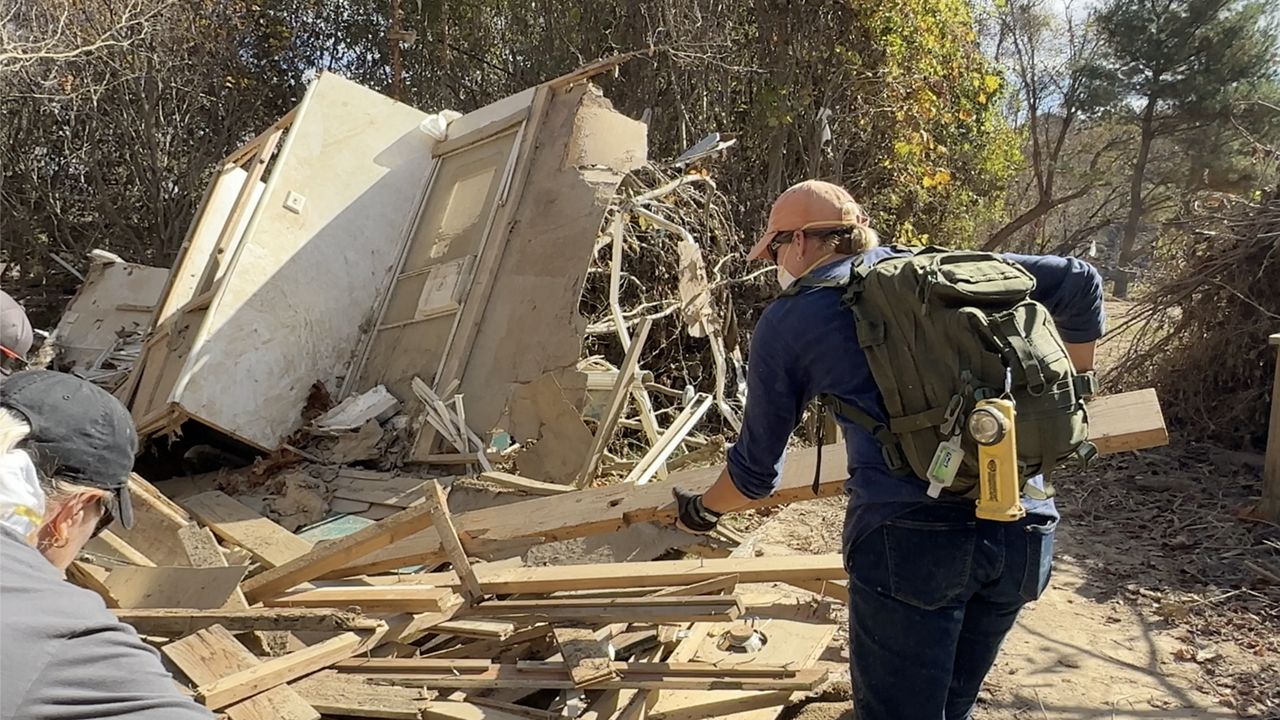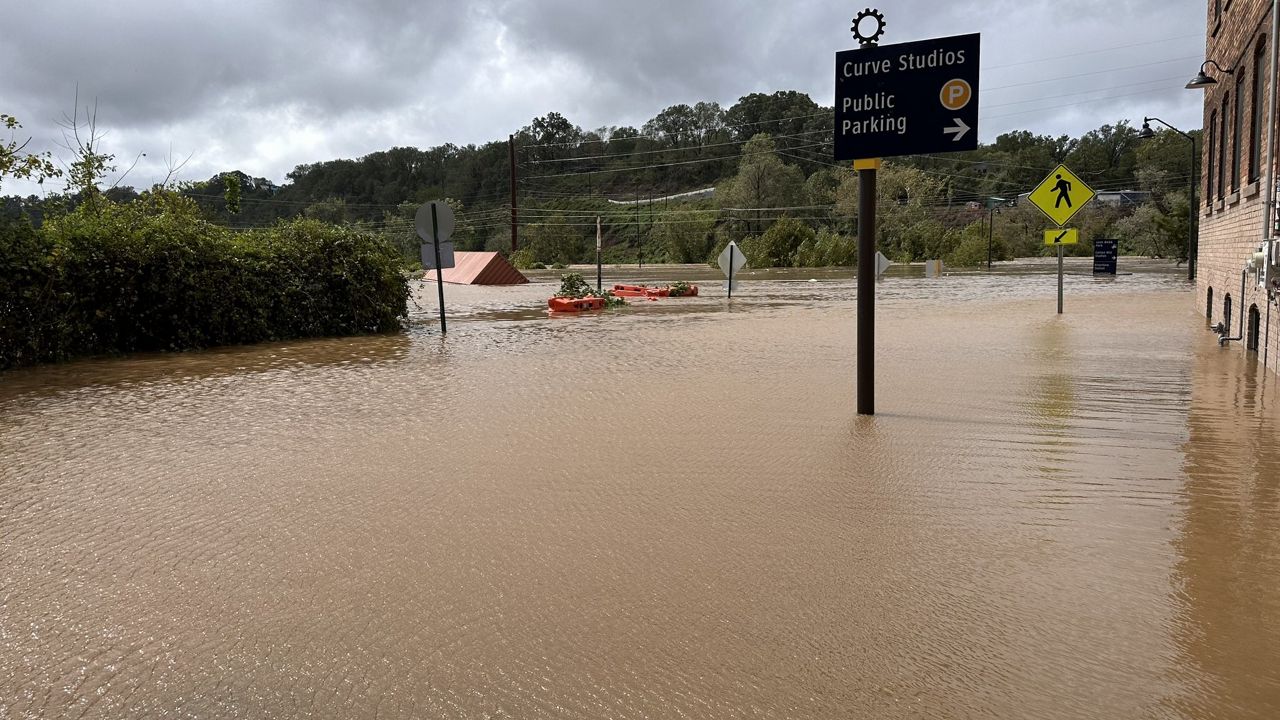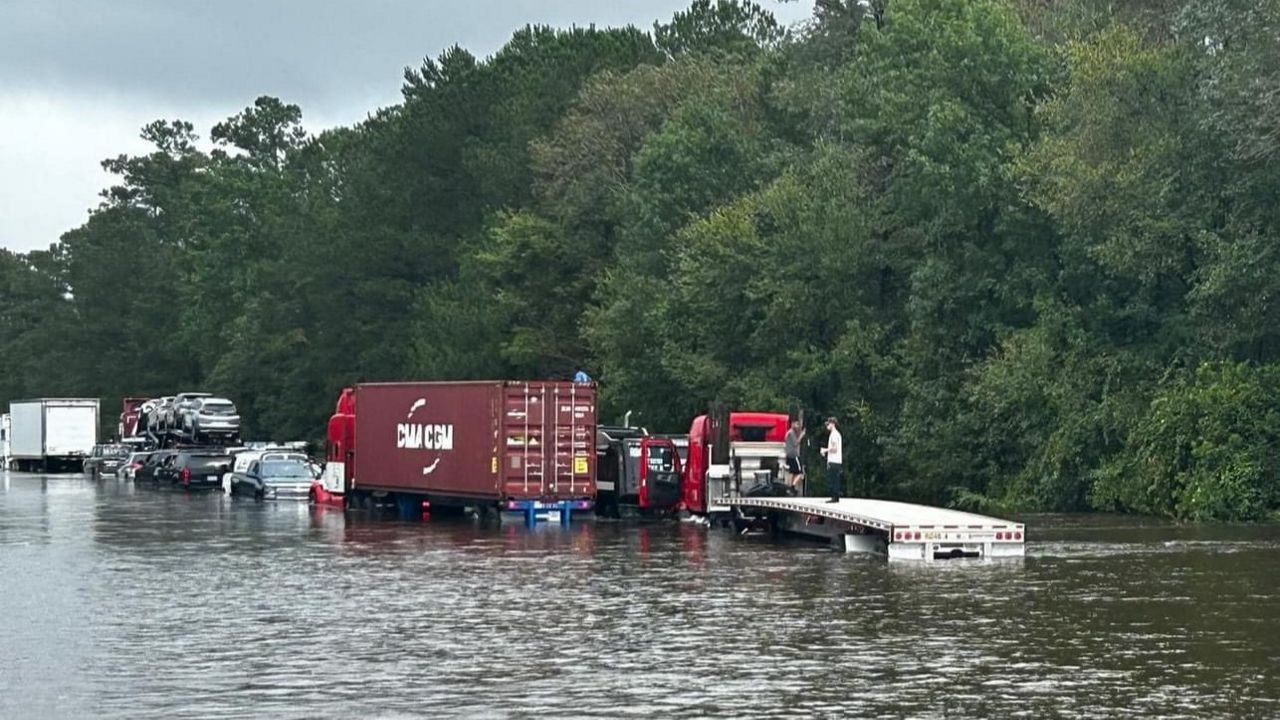Images of the tragic flooding caused by Helene over a month ago across western North Carolina are burned into the minds of many in the region. The water has long since receded, but what the water may have left behind has farmers concerned.
That includes Mary Bulan, who grows flowers and vegetables on a small tract of land known as Little Farm along the Swannanoa River. She describes Little Farm as a great way to share the joy of farming with her community.
It's a community that remains devastated by Helene.
“We saw our neighborhood with houses that just floated away. It was incredible,” Bulan said while describing what she saw at her family's home in nearby Black Mountain just after the storm,
At her farm, she suspects her field was under 8 feet of water at one point. By the time she was able to make it to Little Farm almost a week later, all that was left was mud.
“When I walk out in the field with my boots, I just started going and then the mud got higher and higher. When you’re about 6 inches deep and you can’t move anymore, I realized there’s a lot of sediment that’s been deposited here,” she said.
It has Bulan wondering what's left behind in that sediment.
"I’ve been concerned about contaminants from industrial sources especially heavy metals," Bulan said. "Those are the types of things that it’s not safe to work in. They can be taken up by the plants that you’re growing, so you can’t eat it.”
Those are concerns North Carolina Cooperative Extension Agent Michael Rayburn has been hearing from growers around the area. He said work is well underway to address those concerns.
“N.C. State has a strike team that is currently in the area taking preliminary test samples to see if we do have contamination and how we can move forward from there,” Rayburn said.
Full results of that soil testing are expected in the next couple of weeks.
Rayburn said they are also taking lessons from other parts of the country.
"California and parts of Colorado within the past few years have also experienced 1,000-year flood events," he said. "So there has been good research as to just how contaminants move in these high water events.”
He also said Helene has likely changed some farms in western North Carolina forever, and whole business models will have to adapt and change.
Back on Little Farm, Bulan plans to get her soil tested with the hopes of continuing to grow crops.
While visiting her farm, there were some signs of flowers growing and birds were chirping. They were signs of life and optimism that are much needed in a time when extreme weather events like Helene are happening more frequently.
When asked if she was concerned about future storms in a warming climate, Bulan said, “I mean, the farm is one thing but like the neighborhoods, the destruction of people’s lives is terrifying. My kids are young. Like, what’s going to happen in their lifetime? That’s what I really worry about.”
Our team of meteorologists dives deep into the science of weather and breaks down timely weather data and information. To view more weather and climate stories, check out our weather blogs section.











